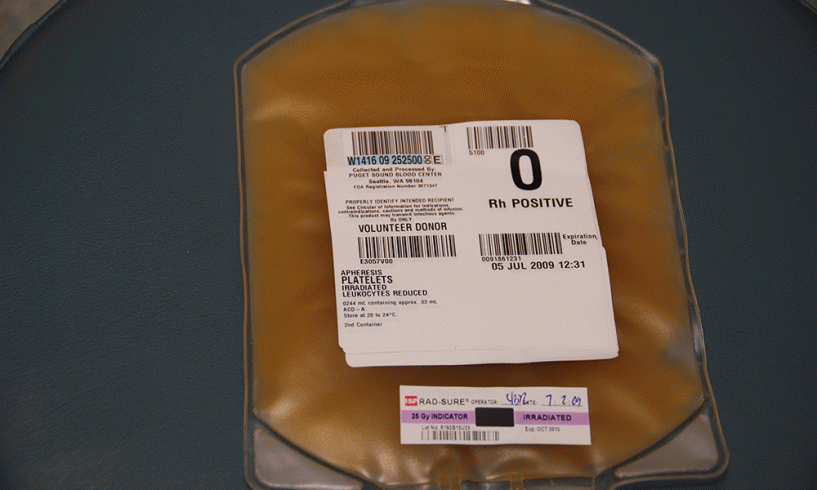Jackie is administering six units of pooled random donor platelets to Stuart, a patient with myelodysplastic syndrome. The transfusion was started at 120 ml per hour, per hospital policy. When Jackie rechecked Stuart’s vital signs at 15 minutes, she noted that his temperature had increased from 37.1°C to 38.1°C. In addition, Stuart was chilling.
What Would You Do?
Fever associated with the administration of blood products is generally referred to as a febrile non-hemolytic transfusion reaction. It is defined as an increase in temperature of 1°C or more, with or without chills and is estimated to occur in up to 30% of all platelet transfusions but is likely under-reported.
Fever can be caused by bacterial contamination of platelet products; however, a more common etiology is the presence of white blood cells or leukocytes in the product. These “stowaway” cells produce increasing levels of cytokines IL1-beta, IL6, IL8, and TNF-alpha as platelets are stored, which result in a pyrogenic response. Prostaglandin E2 is also stimulated by way of circulating soluble CD40 ligand. Leukocytes can be filtered, although not all white cells are removed. There is currently no method to remove cytokines once they have contaminated the product.
Apheresed products can be leukoreduced during collection, reducing the production of cytokines. In some cases, removing most of the plasma from the product is necessary, because the plasma (not the platelets) is the source of the reaction.
Jackie stopped the transfusion and notified the patient’s medical provider. Acetaminophen was given to reduce the fever. The product was discarded, and a new product was ordered.






